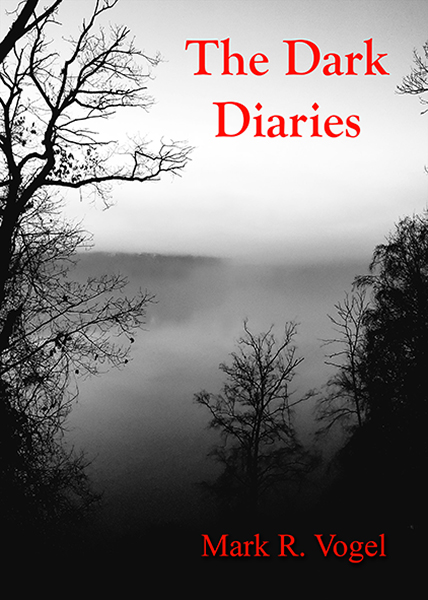After slyly positing the possibility that Jason Voorhees’s mother, Pamela, didn’t in fact kill anyone in the opening chapter of his blockbuster Friday the 13th saga, Sean Cunningham handed his producer, Steve Miner, the directorial reigns. The rookie filmmaker simultaneously eradicates the speculative fun of his predecessor while ingeniously refusing to take the easy route in Friday the 13th Part 2 by fashioning his own unique vision of terror as he charges the fore of cinema with a rebellious zeal.
Five years after Pamela Voorhees (Betsy Palmer) killed nine counselors at Camp Crystal Lake, the lone survivor, Alice Hardy (Adrienne King), is murdered. Two months later, Paul Holt (John Furey) opens a counselor training center called Packanack Lodge, which is located in the periphery of the original slayings. Is one of his trainees, Ginny Field (Amy Steel), correct in her drunken statement that the Jason myth is true, that the fabled drowning fatality that served as the impetus of the mass homicides is still alive and seeking revenge for his beheaded mother?
Instead of waltzing through the open door left to him by Cunningham in the original and positing the mentally unstable figure of Alice as his new killer (thus forging the path for an ad infinitum storyline for sequels), Miner retrospectively validates that, indeed, Pamela was the killer in Part 1 (unless one were to dismiss such information due to its arriving in the form of drunken gossip . . . ). Though he does so in order to construct the avenue by which he will present his new vision of terror, such narrative indiscretion is just that for Miner could have easily sustained the provisional fun to be had with Cunningham’s work and still managed to present his storyline. However, if we take the surface reading of the original, the filmmaker can be credited for usurping horror sequel tradition in that he doesn’t bring back the supposedly deceased killer, arguing instead that the killer never killed (but is now about to). As such, the director takes time to not only expand and expound upon Jason’s legacy and history, he issues his antagonist a halfhearted m.o. while concurrently developing his characters. An admirable feat for an overtly shameless film.
Though Pamela’s love for her child is ironically mirrored in Jason’s supposed motive being the love for his slain mother (if we want to continue to humor the possibilities of the original, Jason killed for revenge and then, once his rage was appeased, they had to go and kill his mother . . . granted, the only association his new victims have to the culprit is their occupation but, given the stereotypical nature of the characters–both in the film and in life–we can hardly begrudge Jason for, obviously, if the current set of nymphomaniacs were put in charge of kids in a lake, we know well what would more than likely occur–all of which foregoes the alibi that Jason is “special” in that he might not realize that he has successfully reached his original goal–atop the fact that such characters are a dime a dozen, i.e. not readily distinguishable from one another), Miner–true to the nature of the genre–iconoclastically creates (in the Hershel Gordon Lewis tradition, no less) one of the first unrepentantly gratuitous works of horror (as iconoclastic as opening the film by killing the cinematically immortal: The Final Female of the original as, moreover, her replacement sees the dawn of a new day in lieu of getting hammered the evening before). However, from a sociological and historical perspective, such filmmaking is not to be viewed as brazen for, during the time, said approach to cinema was reserved for pornography and pornography alone. Even Poverty Row pictures of yesteryear held a simulacra of pride. Thus, when this fact is placed alongside the notice that a major production company backed the work, such compliments (as opposed to downgrades) the philosophy and underdog tone of the medium as well as the film itself, a work which otherwise encompasses, if not exemplifies, the slasher standard.
Interestingly, because Friday the 13th Part 2 merely assumes the plot of its forerunner, recasts a new antagonist, while removing the mystery component (thereby making it the first true slasher installment in the franchise), the film succinctly reflects the fears and anxieties of the period as its synchronicity becomes uncanny. As Noel Carroll, the noted author of the seminal study of the field, The Philosophy of Horror, states in his essay “King Kong: Ape and Essence,” Reaganomics was being forecast in horror films long before its debut. Such works as George Romero’s Dawn of the Dead, John Carpenter’s Halloween, and Ridley Scott’s Alien gave us scenarios which epitomized Darwinian Survival of the Fittest before we had cause for alarm. However, given that biology in this respect was at the bottom of humanity’s itinerary for concern, the popularity of the slasher film ironically coincides with Donald Trump’s ascension, thereby signaling that the fear which we are projecting is actually our economic worries under a new political administration–in short, if you’re not the monetary “killer,” you best run like Hell ’cuz someone is assuredly after you. In this respect, “brutal” does not even marginally offer to describe the essence of the omnipresent, omnipotent stalker we see before us for, in Friday the 13th Part 2, he houses no sympathy or remorse, for his single-minded focus refuses to exclude even a paraplegic (Mark, played by Tom McBride) for, though he poses little risk of keeping the killer from achieving his goal, instead of pushing Mark aside, it is easier for Jason (Warrington Gillette) to merely bludgeon the cripple so as to conserve energy and time. To put it another way, how else do you amass and retain millions upon billions in a capitalistic regime toward the close of the twentieth century?
Conversely, but not surprisingly, teenage audiences consciously and subconsciously react to such pictures because they recognize symbolic worries manifesting themselves on the screen. Paraphrasing Vivian Sobchack’s essay, “Bringing It All Back Home,” as rage and helplessness boldly present themselves, young adult viewers empathize with such emotions as slasher films challenge their notions of invulnerability (while keeping in mind that Miner’s film appeared during a time when cocaine was the drug) in that individuals like themselves meet premature ends time and time again (until this phase in horror, death’s demographic was almost always 30+ adults) before salvation, though feeble in the wake of the next installment in the series, presents itself. Also, as premarital sex is to be literally punished (another Reagan-esque mantra), such also casts their own lustful natures as all the more tantalizing as a naughty, thrill-seeking consequence.
Moreover, Friday the 13th Part 2 is a prototypical illustration of the allure of the Final Female. Though typecast, the character’s popularity is nonetheless rooted in human psychology as, as her titles professes, she emerges a woman after shedding her childlike innocence. Similarly, the undeniable attraction by both sexes to such film resides in the mere linguistic label of “killer,” a term that is often synonymous with a male exhibiting much machismo. As such, the Final Female counters the psychosexual dexterity of the antagonist, thereby invigorating the female audience while, more often than not, subconsciously evoking the dread of castration in the male viewer, something which seems all but impossible (a cinematic trademark) given the “killer’s” numerous “conquests” which precedes his demise. This is enacted by the Final Female’s intelligence as exhibited in her resourcefulness, which is highlighted by her peers who do (natch, did) not house the mental prowess (another symbolic sin condemnable by death) to survive under similar conditions. Interestingly, Ginny–along with her subgenre cohorts–utilize tactics akin to those taught in rape defense courses (fitting considering that a slashers are often labeled symbolic rapists with their phallic weapons). Furthermore, we find the feminine figure reaffirming in that, in relation to the history of the genre, she perseveres whereas her female forerunners had to be rescued by chivalrous males.
In lieu of many of the various notes of psychological, social, gender, and chronological relevance, Miner’s efforts, much like Cunningham’s, meet their agenda: To produce a work which offers little outside of entertainment value. As such, by crossing the Zodiac killer’s ensemble when he appeared at Lake Berryesa and the antagonist from Charles Pierce’s The Town That Dreaded Sundown, Miner accomplishes his goal as his picture comes complete with a barrage of false alarms and missed opportunities. An example of the latter includes his, perhaps inadvertent, mimicry of cat-and-mouse implication with his viewer as Walt Gorney reprises his role as Crazy Ralph. Just as it occurs to us that the character survived the original, thereby goading the notion that perhaps he is a plausible suspect in the original slayings, Miner kills him. Thus, the director trades the irrefutably more rewarding speculative possibilities forged by his cinematic antecedent in order to merely shadow Cunningham but, alas, this is the sole instance of playful mystery which the film houses as the remainder of the feature lapses into a routine of Puritanical sin being immediately rewarded by death. Yet, on this note, it does seem ironic that of all weapons, a pitchfork appears as Ginnie obtains her persecutor’s symbolic power, his metaphorical phallus, in order to protect her virtue in much the same manner that the agricultural tool is harbored in Grant Wood’s American Gothic.
Skipping “Bride of” and “Son of” in order to haphazardly arrive at the “House of”–or, more precisely, “Shed of Jason,” Steven Miner gives us his debut feature, the sequel to Sean Cunningham’s inadvertently stimulating Friday the 13th. Regardless of how the work has, and continues to, successfully ride the wave of time in lieu of mainstream critics’ distain, we–if nothing else–are forced to acknowledge the fact that the director at least has the presence of mind not to commit the cinematic faux pas of his precursor by killing an animal onscreen as, alas, Muffins prevails!
-Egregious Gurnow
- Interview with J.R. Bookwalter - January 22, 2015
- Interview with Andrew J. Rausch - January 22, 2015
- Interview with Rick Popko and Dan West - January 22, 2015
- Interview with Director Stevan Mena (Malevolence) - January 22, 2015
- Interview with Screenwriter Jeffery Reddick (Day of the Dead 2007) - January 22, 2015
- Teleconference interview with Mick Garris (Masters of Horror) - January 22, 2015
- A Day at the Morgue with Corri English (Unrest) - January 22, 2015
- Interview with Writer/Director Nacho Cerda (The Abandoned, Aftermath) - January 22, 2015
- Interview with Actress Thora Birch (Dark Corners, The Hole, American Beauty) - January 22, 2015
- Interview with Actor Jason Behr, Plus Skinwalkers Press Coverage - January 22, 2015


